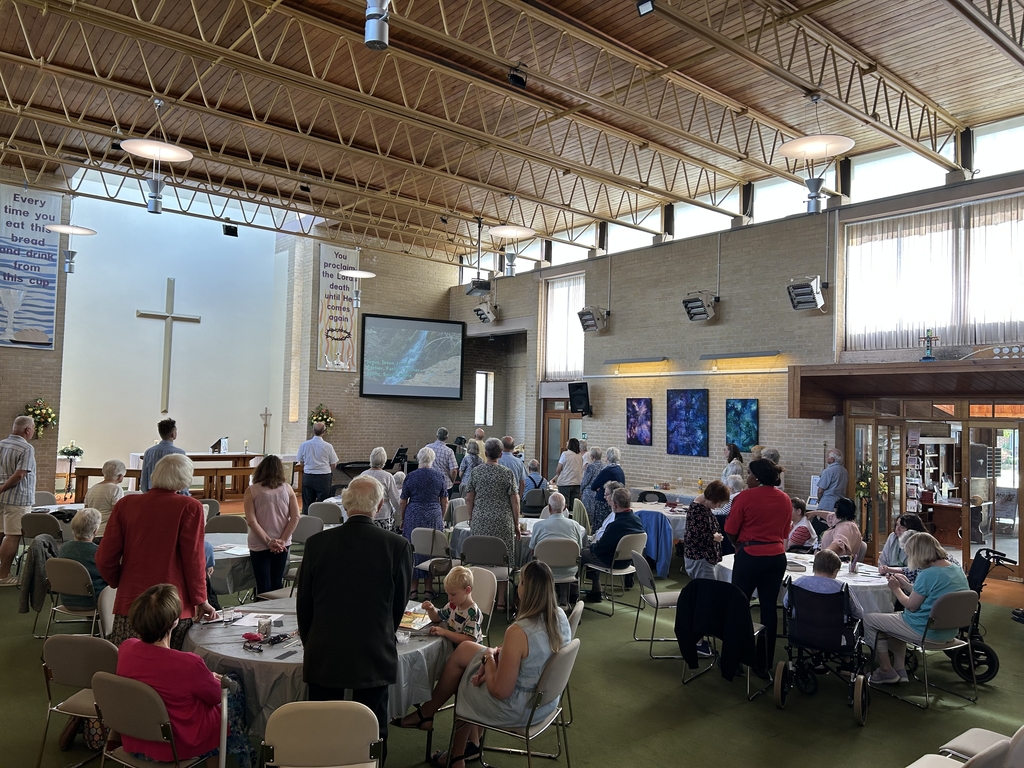After our Eco Champion, Paul Hunt's sermon on Environment Sunday, 22 September, seven members of Christ Church gathered for our second Eco Church Walk. The weather forecast was looking dubious, with thunderstorms and a 75% chance of rain forecast, but thankfully we were blessed with warm sunny and sometimes cloudy weather, as we walked over 5kms around Billericay learning more about the local wildlife.
We started by investigating the tree species at the front of Christ Church, where we have two lovely examples of English oaks with plenty of acorns. According to Forestry England, English oaks can take about 40 years before producing acorns, which are hugely important for their value to wildlife. Oaks can support over 280 different species of insects. Next to the oaks are two hornbeam trees which serve as food for the caterpillars of a number of moth species, including the nut-tree tussock. finches, tits and small mammals eat hornbeam seeds in the Autumn.
We ventured across to Queen’s Park Country Park, which used to be an area of amenity parkland but is now managed to develop wildlife in the area. There is a large meadow area that is cut once a year for hay, but otherwise is left to develop a range of wildflowers and to encourage wildlife. As we walked down to Rosebay Avenue, Les was able to cast his mind back to his youth and told us how the Queen’s Park estate used to be mainly woodland – known as Mill Hill Wood and plotlands - these areas were eventually re-developed from the late 1970’s onwards.
We went on to Hannakins Recreation Ground via Hannakins Meadow and crossed a footbridge that is in serious need of repair as one side of the steps had rotted completely away. In the recreation ground we discovered a yew tree, which was a surprise to us all. The yew tree had its red fruit on display, and this fruit is eaten by birds such as blackbirds and song thrush, and also enjoyed by squirrels and dormice. The yew tree is often associated with churchyards and the Woodland Trust website mentions that there are “at least 500 churchyards in England which contain yew trees older than the buildings themselves. It is not clear why, but it is thought that yew trees were planted on the graves of plague victims to protect and purify the dead.”
We took a short break at the ‘Inn on the Green’ for drinks, and then walked on through Lake Meadows, where we admired the new noticeboards which also serve as bug hotels. This got us all thinking - could we do this at Christ Church? Perhaps this is a project for the future to help towards our Gold Eco Church Award.
We really enjoyed the lovely sunny afternoon, walking and learning together about our surroundings, and it was a really great way to spend Christ Church Environment Sunday.
We’ll let you know when our next walk is so that you can join us if you’d like to.















